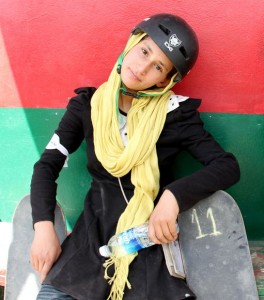UN Notes That Ending Torture Requires Accountability. Too Bad They Are Talking About Afghanistan.
Back in October of 2011, I wrote about a report prepared by the UN (pdf) in which it was found that torture is widespread in detention facilities administered by Afghanistan. The primary point of my post was that the US, and especially JSOC, had no credibility in their denials of responsibility for torture in Afghan prisons because the entire Afghan detention system had been established and its personnel trained by JSOC.
The US response to that report was not a huge surprise. It consisted of a doubling down on the one thing ISAF claims as its savior–training. After all, it is training of the ANSF that is intended to provide cover for the eventual withdrawal of combat forces by the end of next year, so why can’t training save the detention system, too? A follow-up report was issued yesterday (pdf), and it serves as a complete slap-down to the US response.
The report finds that this training approach was a dismal failure, as torture has not abated:
Using internationally accepted methodology, standards and best practices, UNAMA’s detention observation from October 2011 to October 2012 found that despite Government and international efforts to address torture and ill-treatment of conflict related detainees, torture persists and remains a serious concern in numerous detention facilities across Afghanistan.
UNAMA found sufficiently credible and reliable evidence that more than half of 635 detainees interviewed (326 detainees) experienced torture and ill-treatment in numerous facilities of the Afghan National Police (ANP), National Directorate of Security (NDS), Afghan National Army (ANA) and Afghan Local Police (ALP) between October 2011 and October 2012 This finding is similar to UNAMA’s findings for October 2010-11 which determined that almost half of the detainees interviewed who had been held in NDS facilities and one third of detainees interviewed who had been held in ANP facilities experienced torture or ill-treatment at the hands of ANP or NDS officials.
And here is the UN concluding in the report that training alone won’t stop torture. Instead, real accountability is what is needed:
Similar to previous findings, UNAMA found a persistent lack of accountability for perpetrators of torture with few investigations and no prosecutions or loss of jobs for those responsible for torture or ill-treatment. The findings in this report highlight that torture cannot be addressed by training, inspections and directives alone but requires sound accountability measures to stop and prevent its use. Without effective deterrents and disincentives to use torture, including a robust, independent investigation process or criminal prosecutions, Afghan officials have no incentive to stop torture. A way forward is clear.
This seems like a particularly important message to take into consideration on the day that Barack Obama is involved in the pomp and circumstance of starting his second term in office. He gained the support of many progressives during the Democratic primaries in 2008 by issuing a strong call for torture accountability and then famously turned his back on it by expressing his desire to “look forward, not backward”. With this report, the UN shows the moral bankruptcy of such an approach and seems in fact to even be taunting him with the final “A way forward is clear.”

